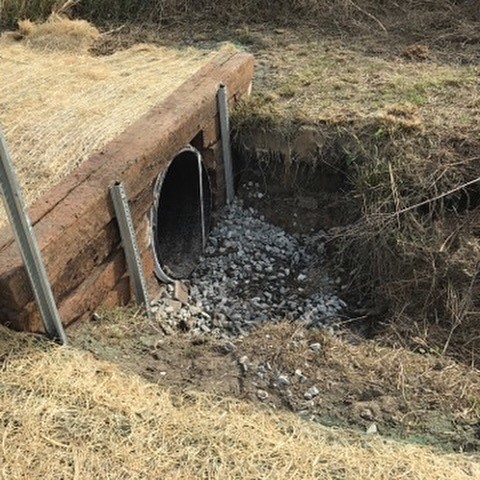Culvert Setup Facilitated: Step-by-Step Overview for Success
Setting up culverts may feel like an uncomplicated task, yet making sure an effective result needs cautious planning and implementation. From choosing the appropriate culvert size to integrating correct water drainage actions, each step in the installment procedure plays a critical duty in the capability and longevity of the culvert system. By complying with a methodical method and taking notice of essential details, the setup can proceed efficiently, lessening prospective concerns down the line. Stay tuned to uncover the essential actions and considerations that can make culvert installation a seamless and successful undertaking.
Picking the Right Culvert Size
Selecting the proper culvert size is crucial for making sure efficient water circulation and architectural integrity in culvert setup projects - Pad Construction. The size of the culvert straight impacts the flow capability of water with the framework. A culvert that is too little can lead to flooding and overflow, while one that is too huge may lead to decreased water speed, possibly triggering sediment buildup and clogs
To determine the ideal culvert dimension, elements such as the watershed area, top circulation prices, and hydraulic efficiency requirement to be thoroughly considered. Calculations based on these criteria aid in selecting a size that can adequately take care of the expected water volume while lessening the threat of clogs and structural failure.
It is necessary to consult engineering standards and standards to guarantee that the picked culvert size meets the task requirements and neighborhood regulations (Pad Construction). By selecting the best culvert dimension, job managers can enhance water circulation, stop possible concerns, and boost the overall performance and long life of the culvert installation
Preparing the Installment Website
Effective culvert installment requires meticulous prep work of the setup site to guarantee optimal architectural support and capability. Before commencing the setup procedure, it is vital to remove the website of any type of particles, greenery, or blockages that could restrain the culvert's placement.
Moreover, it is important to think about variables such as soil structure, groundwater degrees, and ecological influences when preparing the installation site. Carrying out a detailed site evaluation can help recognize any prospective obstacles or threats that might impact the culvert's performance. By making the effort to prepare the setup website appropriately, you can aid assure a successful culvert setup that fulfills structural needs and ensures long-term capability.
Positioning the Culvert Appropriately

The grade at which the culvert is placed is vital Continue for keeping a proper slope for water flow. Furthermore, the culvert should be oriented appropriately to make certain that the inlet and outlet are in the proper places. Pad Construction.
Backfilling and Condensing the Dirt
Correct backfilling and compaction of the soil around the culvert is vital to guarantee stability and avoid potential issues in the future. When the culvert is correctly positioned, the next essential step is to backfill the location around it with ideal product.
After positioning the backfill material, it is very important to portable it in layers of consistent thickness. Using a compactor or a mechanical meddle, small the dirt gently to avoid harming the culvert. Compaction assists in minimizing the chances of negotiation and makes sure uniform support around the culvert. It is essential to small the soil equally on all sides of the culvert to keep its architectural honesty.
Correct backfilling and compaction not just provide security to the culvert but also aid in avoiding dirt erosion and keeping the durability of visit the website the culvert system.
Ensuring Appropriate Drainage Combination
Integrating efficient drainage services plays a vital duty in the general performance and durability of culvert installations. Appropriate water drainage integration is vital for taking care of water circulation, preventing disintegration, and making you can look here sure the structural honesty of the culvert system. To attain this, it is vital to make a thorough drainage plan that takes into consideration factors such as the quantity of water anticipated, the topography of the area, and the kind of dirt present.

Furthermore, integrating attributes like disintegration control actions, such as riprap or vegetation, can further boost the performance of the drainage system. By meticulously preparing and implementing these drain services, culvert installments can work efficiently and hold up against the examination of time.
Final Thought
To conclude, correct culvert setup is essential for keeping efficient drain systems. By selecting the ideal culvert dimension, preparing the installation website, placing the culvert correctly, backfilling and condensing the dirt, and making sure correct drainage combination, success can be achieved. Complying with these actions will certainly help guarantee the long life and efficiency of the culvert, ultimately contributing to the general success of the drainage system.